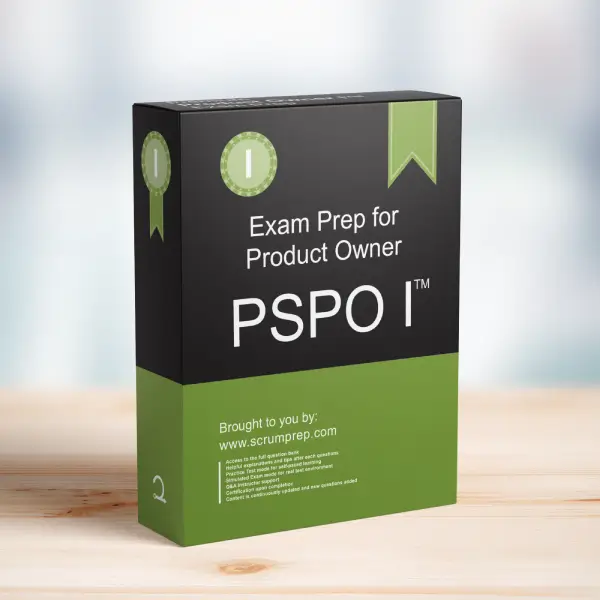Applying Validated Learning in Scrum
In Scrum, validated learning is crucial for ensuring that the product being developed meets the needs and expectations of its users. This concept involves testing assumptions and goals through tangible results, enabling Product Owners to make informed decisions based on empirical data.
Exam Question
Learning turns into ‘validated learning’ when assumptions and goals can be assessed through results. What is a key way for a Product Owner to apply validated learning?
(choose the best answer)
- A. Set the Sprint Goal before selecting Product Backlog items at Sprint Planning to learn about a Scrum Team’s productivity.
- B. Accept an Increment at the Sprint Review to learn about the forecast of functionality that was developed.
- C. Release an Increment to the market to learn about the business assumptions built into the product.
Correct Answer
C. Release an Increment to the market to learn about the business assumptions built into the product.
Explanation
Why C is Correct
C. Release an Increment to the market to learn about the business assumptions built into the product:
This option reflects the true essence of validated learning. By releasing an Increment to the market, the Product Owner can gather real user feedback and data to understand whether the business assumptions and goals are being met. This empirical evidence is invaluable for guiding future development and ensuring the product delivers value.
Why A and B are Incorrect
A. Set the Sprint Goal before selecting Product Backlog items at Sprint Planning to learn about a Scrum Team’s productivity:
While setting a Sprint Goal is essential, it primarily helps in focusing the Scrum Team’s efforts rather than validating business assumptions. It does not directly lead to validated learning about the product’s market fit or user acceptance.
B. Accept an Increment at the Sprint Review to learn about the forecast of functionality that was developed:
Accepting an Increment during the Sprint Review is part of the inspection and adaptation process. While it includes internal feedback within the Scrum Team and stakeholders, it can also incorporate data from the market or end-users. However, it is not the primary method for obtaining validated learning from the actual market or end-users.
Key Points
- Empirical Evidence: Validated learning relies on real-world feedback and data, which is best obtained by releasing Increments to the market.
- User Feedback: Direct input from users and market response are critical for understanding the effectiveness of the product and guiding future decisions.
- Adaptation: The insights gained from validated learning help the Product Owner make informed adjustments to the Product Backlog and development approach.
Responsibilities in Scrum
- Product Owner: Accountable for maximizing the product’s value by applying validated learning to make data-driven decisions about what to build next.
- Scrum Master: Facilitates the Scrum process, ensuring that validated learning is part of the empirical feedback loop.
- Developers: Collaborate with the Product Owner to understand the results of validated learning and incorporate insights into their work.
Relevance to the PSPO I Exam
Understanding validated learning and its application is crucial for the PSPO I exam. It highlights the importance of using empirical data to guide product development, ensuring that the Product Owner can maximize the product’s value effectively.
Conclusion
Validated learning is a key concept in Scrum that allows Product Owners to assess assumptions and goals through real-world results. Releasing Increments to the market provides the necessary feedback to validate business assumptions and guide future development.
For comprehensive preparation and practice exams, check out PSPO I Exam Prep to enhance your understanding and application of Scrum principles.


